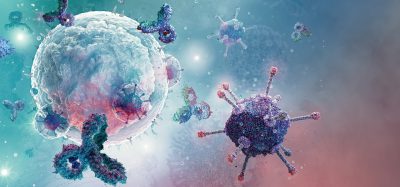Scientists discover compound for a non-addictive painkiller
Posted: 30 August 2018 | Iqra Farooq (Drug Target Review) | No comments yet
Scientists have discovered the chemical compound AT-121, which could soon lead to a painkiller stronger than morphine, but without the side effects…


Scientists have developed a chemical compound which could potentially lead to becoming an effective non-addictive painkiller.
Researchers from the Wake Forest School of Medicine, along with support from the National Institute on Drug Abuse developed AT-121, a compound which suppresses the addictive effect of opioids and produces ‘morphine-like analgesic’ effects in non-human primates.
“In our study, we found AT-121 to be safe and non-addictive, as well as an effective pain medication,” said Professor of Physiology and Pharmacology at Wake Forest Baptist Medical Centre, Dr Mei-Chuan Ko.
“In addition, this compound also was effective at blocking abuse potential of prescription opioids, much like buprenorphine does for heroin, so we hope it could be used to treat pain and opioid abuse.”
The scientists designed the chemical compound to work on the mu opioid and the nociceptin receptors. The mu opioid receptor is the area most effective in prescription pain killers, and the nociceptin receptor opposes or blocks the abuse and dependence-related side effects of mu-targeted opioids.
As current painkiller drugs, such as fentanyl and oxycodone, work only on the mu opioid receptor, unwanted side effects are often experienced, such as physical dependence, respiratory depression, abuse potential, and increased sensitivity to pain.
“We developed AT-121 that combines both activities in an appropriate balance in one single molecule, which we think is a better pharmaceutical strategy than to have two drugs to be used in combination,” said Prof Ko.
The researchers identified how AT-121 showed the same level of pain relief as an opioid, but at a dose 100-times lower than that of morphine. With the chemical compound being at such a low dose, the addictive effects of oxycodone were also prevented.
“Our data shows that targeting the nociceptin opioid receptor not only dialled down the addictive and other side-effects, it provided effective pain relief,” Prof Ko said.
“The fact that this data was in nonhuman primates, a closely related species to humans, was also significant because it showed that compounds, such as AT-121, have the translational potential to be a viable opioid alternative or replacement for prescription opioids.”
The scientists observed how the compound gave effective pain relief without the potential for abuse, and how it also lacked other side effects that came with pain relief drugs such as itchiness, respiratory depression, dependence and tolerance.
They aim to conduct in depth preclinical studies to support their data, and to collect more information on the safety of the compound. The scientists look to apply to the US Food and Drug Administration for approval to being clinical trials.
The study was published in the journal Science Translational Medicine.
Related topics
Drug Discovery, Drug Targets, Research & Development
Related conditions
Chronic pain, pain
Related organisations
National Institute on Drug Abuse, Wake Forest School of Medicine
Related people
Professor Mei-Chuan Ko








